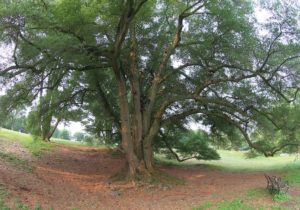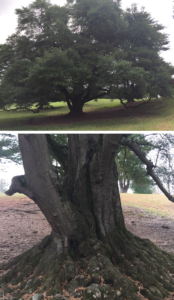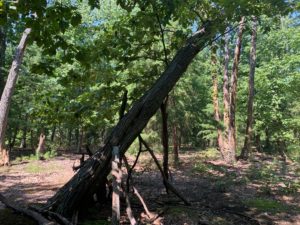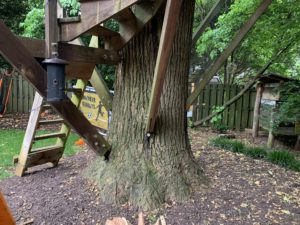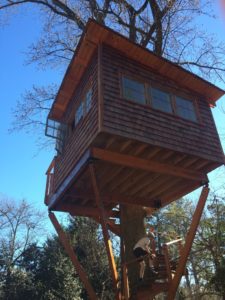I got a call from longtime Dinwiddie county resident, Betty, a couple of weeks ago. She wanted help understanding the age of a tree that had fallen by the old Dinwiddie courthouse. She referred to the tree as the “Hanging Tree,” which certainly got my attention. The grand black oak tree had fallen on a calm day, and she was afraid it would get cleaned up before an arborist could look at it. Definitely worth a trip!
Dinwiddie County is an almost forgotten area of Virginia these days. Even Betty says so. She sat on a stone wall across the street from the tree and under the shade of another younger black oak in the Old Courthouse Lawn and paid special attention to each car passing by. Almost forgotten now, maybe, but at one point in the late 19th century Dinwiddie county was the center of the world. There were more Civil War battles in or near Dinwiddie county than almost anywhere else. The Hanging Tree was already quite mature as battalions of soldiers marched down the main street and undoubtedly took some shade under its wide canopy.
And as history shows, the Hanging Tree was asked to participate in our earlier form of capital punishment. Betty described the last public hanging on this tree to me. The year was 1906. The murderer was caught red-handed, sentenced in court, and hung from the tree within 24 hours of the sentence. Betty said that’s back when justice was swift, and had some choice words to say about death row terms now that go on for decades.
The Old Dinwiddie Courthouse is mainly a tourist attraction now. The curator met me at the tree as well and explained how much of a social and community event a legally ordained hanging once was. He described how the whole area around the tree would have been crowded with locals and people who had made long carriage or horse rides to witness the event.
Determining the age of the tree required some educated extrapolation. Its circulatory system was perfectly healthy, pumping nutrients and water up and down at the outer edge of the tree. But its bones, or heartwood, had been rotting away for at least two centuries. The circumference is roughly 25 feet, meaning its diameter is roughly 7-8 feet. Only the outer 8-10 inches of the circumference is still there. The tree showed small but steady growth in its rings right up to the last. A large stem that separated from the main trunk about 18 ft up was still whole, and in its growth rings, I could see that the growth rate of this tree had been impressively consistent.
The Hanging Tree knew how to handle all kinds of weather. In fact, after extrapolating the growth rate through the missing radius of the tree, and adjusting the estimate to account for a higher rate when the tree was young, the best estimate for the age of this tree is 350-400 years. So yes, this tree knew how to weather some stuff.
I recommended to Betty that the county cut the base to a reasonable height and build a table across the hollow so that it can remain a topic of conversation for many, many years to come. In the hopes that this is the case, we will put The Hanging Tree on our Remarkable Tree Map, at least for now.
RIP, old Girl.
home page































